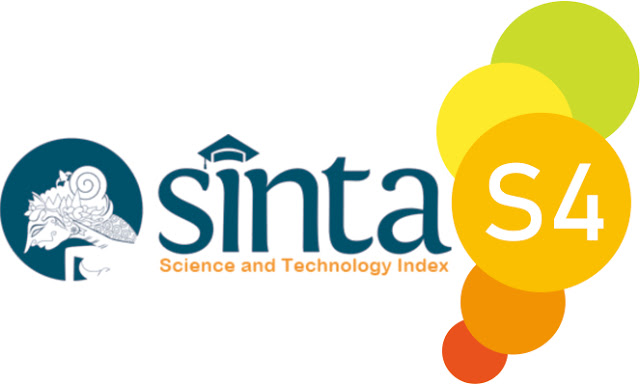HEURISTIC THINKING ON DATA VISUALIZATION BASED ON DASHBOARD CASE STUDIES AT NATIONAL HOSPITAL SURABAYA
Abstract
Dashboard-based data visualization has various information is an option for presenting data is expected to support decision making. The ease of the dashboard isn't perfect, but it also has weakness. The nature of heuristic thinking makes users behave inconsistent with the rational decision-making process tobe an important issue. This study was conducted to explain the heuristic thinking behavior phenomenon from dashboard-based data visualization in the decision-making process. A qualitative approach is used with procedures and data collection based on interview techniques, observation and literature study. Data were observed from the National Hospital, Surabaya. The result is there is a bias in seeing data in a visual form, someone will tend to simplify the decision-making process. The contribution of this study is heuristic thinking on dashboard-based data visualization which can lead users to make irrational decisions.
Downloads
References
[2] J. Hutahaean, Konsep Sistem Informasi. 2014.
[3] A. Elisabet Yunaeti and R. Irviani, Pengantar Sistem Informasi. Yogyakarta: Ani, 2017.
[4] K. C. Laudon and J. P. Laudon, Management Information Systems Managing The digital Firm Thirteen Edition Global Edition (SIB). 2014.
[5] B. Daniel, N. Herb, B. Paul, and I. Amy, “Big data analytics: transforming data to action,” Bus. Process Manag. J., vol. 23, no. 3, pp. 703–720, Jan. 2017, doi: 10.1108/BPMJ-03-2016-0056.
[6] F. E. CHRISTY, “Visualisasi Data, Mengubah Lautan Angka Menjadi Sumber Informasi,” tekno.tempo.co, 2019. https://tekno.tempo.co/read/1268528/visualisasi-data-mengubah-lautan-angka-menjadi-sumber-informasi (accessed Oct. 20, 2020).
[7] C. Amelia and P. Adi, “Reflecting design thinking: a case study of the process of designing dashboards,” J. Syst. Inf. Technol., vol. 17, no. 3, pp. 286–306, Jan. 2015, doi: 10.1108/JSIT-03-2015-0018.
[8] R. Matheus, M. Janssen, and D. Maheshwari, “Data science empowering the public: Data-driven dashboards for transparent and accountable decision-making in smart cities,” Gov. Inf. Q., vol. 37, no. 3, p. 101284, 2020, doi: 10.1016/j.giq.2018.01.006.
[9] D. Hirshleifer, Y. Levi, B. Lourie, and S. H. Teoh, “Decision fatigue and heuristic analyst forecasts,” J. financ. econ., vol. 133, no. 1, pp. 83–98, 2019, doi: 10.1016/j.jfineco.2019.01.005.
[10] M. Fitrah and D. Luthfiyah, Metodelogi Penelitian | Penelitian Kualitatif, Tindakan Kelas & Studi Kasus. Sukabumi: CV. Jejak, 2017.
[11] W. Purhantara, Metode Penelitian Kualitatif untuk Bisnis. Yogyakarta: Graha Ilmu, 2010.
[12] C. Narbuko, A. A. Achmadi, and Haji, Metodologi Penelitian. Jakarta: PT. Bumi Aksara, 2013.
[13] J. Noor, Metodologi Penelitian : Skripsi, Tesis, Disertasi, & Karya Ilmiah. Jakarta: Kencana Prenada Media Group, 2011.
[14] U. Sekaran and R. J. Bougie, “RESEARCH METHODS FOR BUSINESS.” Wiley, New York, 2016, [Online]. Available: https://search.ebscohost.com/login.aspx?direct=true&scope=site&db=nlebk&db=nlabk&AN=1639487.
[15] D. Dowding and J. Merrill, “The Development of Heuristics for Evaluation of Dashboard Visualizations,” Appl. Clin. Inform., vol. 09, pp. 511–518, Jul. 2018, doi: 10.1055/s-0038-1666842.
[16] A. Cuttone, M. Petersen, and J. Larsen, Four Data Visualization Heuristics to Facilitate Reflection in Personal Informatics. 2014.
This is an open-access article distributed under the terms of the Creative Commons Attribution-ShareAlike 4.0 International License which permits unrestricted use, distribution, and reproduction in any medium. Users are allowed to read, download, copy, distribute, search, or link to full-text articles in this journal without asking by giving appropriate credit, provide a link to the license, and indicate if changes were made. All of the remix, transform, or build upon the material must distribute the contributions under the same license as the original.















